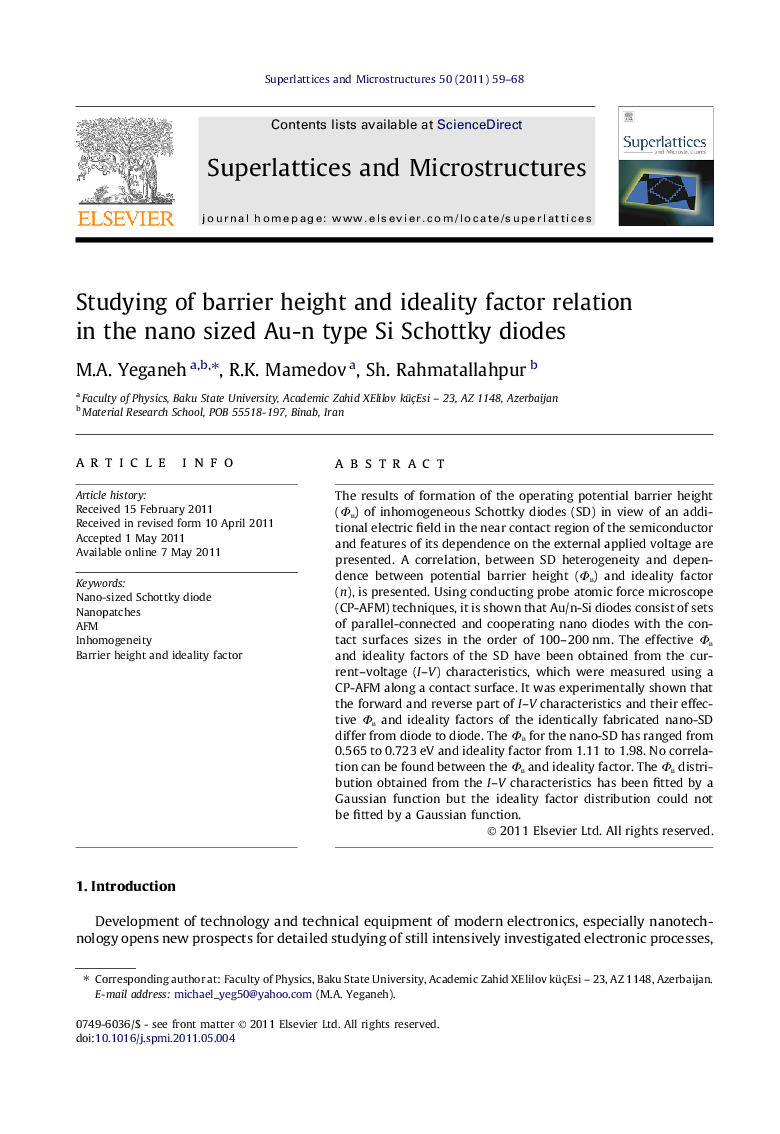| Article ID | Journal | Published Year | Pages | File Type |
|---|---|---|---|---|
| 1554642 | Superlattices and Microstructures | 2011 | 10 Pages |
The results of formation of the operating potential barrier height (Φв) of inhomogeneous Schottky diodes (SD) in view of an additional electric field in the near contact region of the semiconductor and features of its dependence on the external applied voltage are presented. A correlation, between SD heterogeneity and dependence between potential barrier height (Φв) and ideality factor (n), is presented. Using conducting probe atomic force microscope (CP-AFM) techniques, it is shown that Au/n-Si diodes consist of sets of parallel-connected and cooperating nano diodes with the contact surfaces sizes in the order of 100–200 nm. The effective Φв and ideality factors of the SD have been obtained from the current–voltage (I–V) characteristics, which were measured using a CP-AFM along a contact surface. It was experimentally shown that the forward and reverse part of I–V characteristics and their effective Φв and ideality factors of the identically fabricated nano-SD differ from diode to diode. The Φв for the nano-SD has ranged from 0.565 to 0.723 eV and ideality factor from 1.11 to 1.98. No correlation can be found between the Φв and ideality factor. The Φв distribution obtained from the I–V characteristics has been fitted by a Gaussian function but the ideality factor distribution could not be fitted by a Gaussian function.
Graphical abstractFigure optionsDownload full-size imageDownload as PowerPoint slideHighlights► Formation of the operating potential barrier height (ΦB) of inhomogeneous (SD) in view of an additional electric field are presented. ► In the near contact region of the semiconductor its dependence on the applied voltage are presented. ► A correlation, between SD heterogeneity and dependence between (ΦB) and ideality factor (n), is presented. ► CP-AFM techniques show that diodes consist of sets of nano diodes with the contact surfaces sizes in the order of 100–200 nm.
